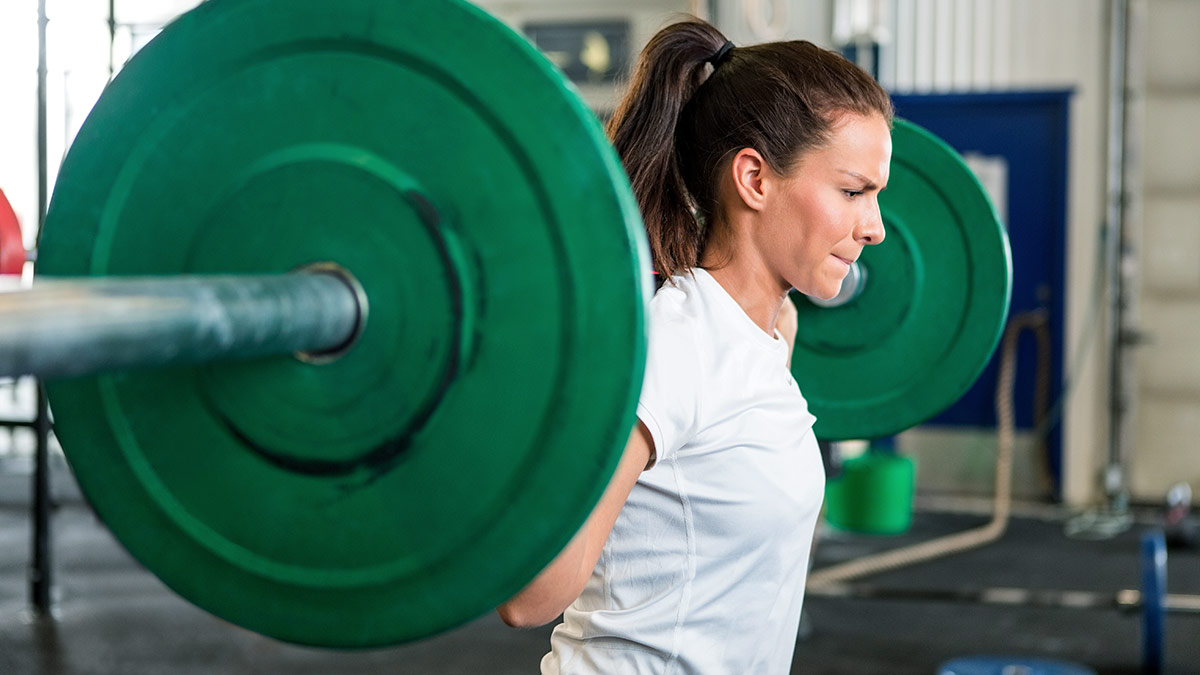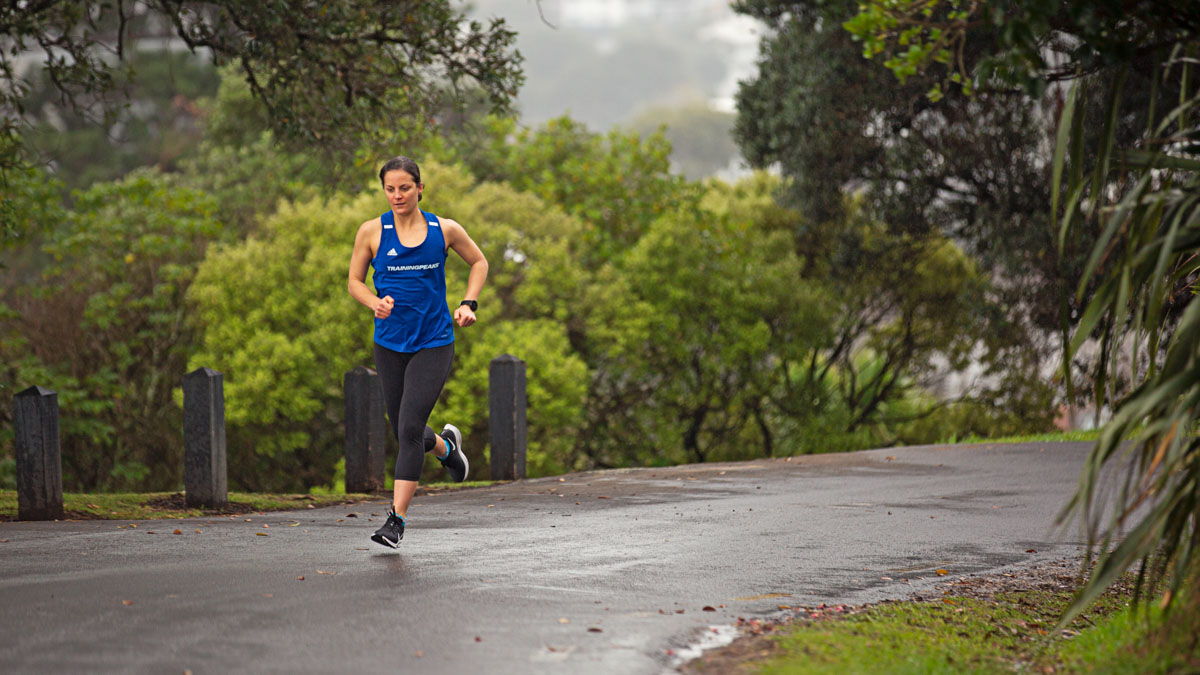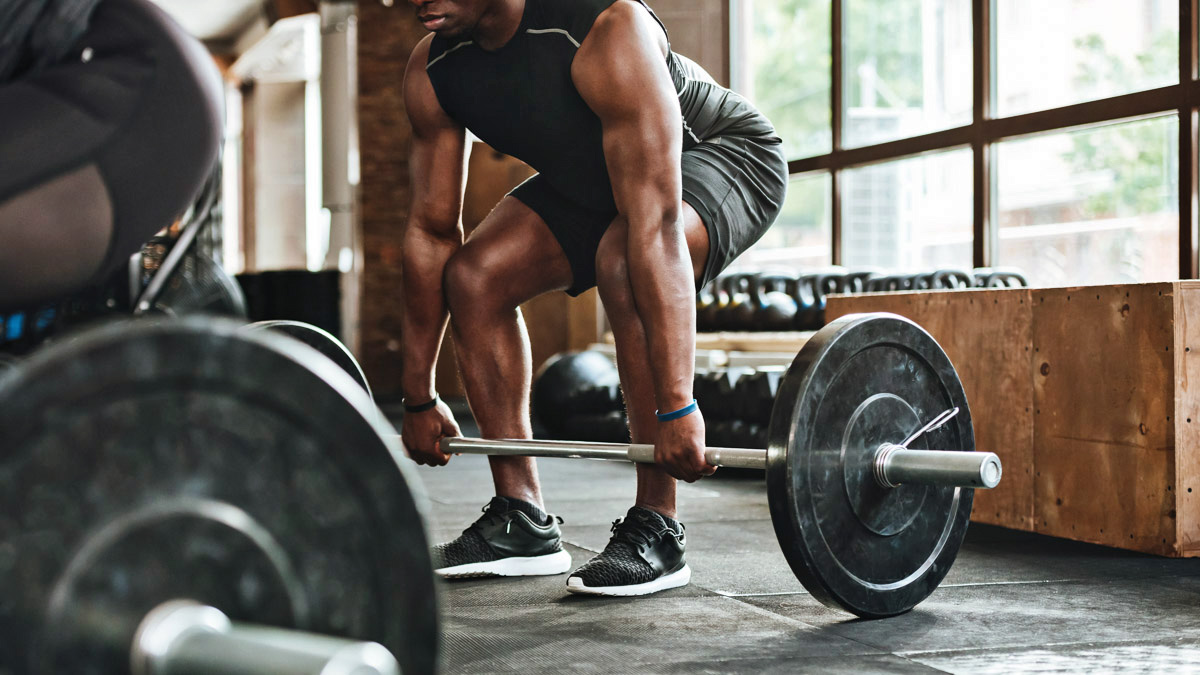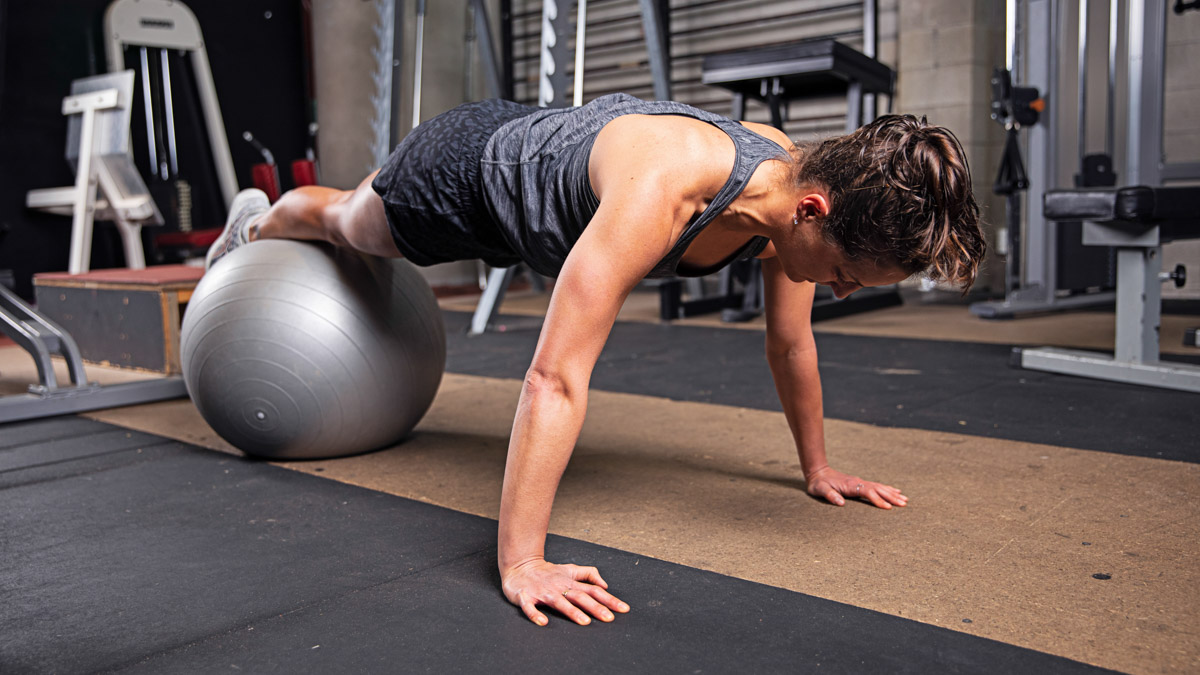Most of us think of pumping iron (usually for aesthetic reasons) when we think of working out in a gym. It doesn’t have to be this way! For road cyclists, an appropriately planned strength program can help increase power, prevent injuries, improve overall fitness and give you a more balanced body.
How Strength Training Counteracts the Side-Effects of Cycling
Performing only cycling workouts is fine, but there are some significant negative side-effects that can limit your performance when not properly addressed.
Muscle Balance
The range of motion required for riding is not only highly repetitive, but unnatural from the point of view of human anatomy. Road cyclists tend to have strong quadriceps and gluteus muscles, but the muscles of the back, abdomen, shoulders, and biceps femoris are rarely as developed. By supplementing your cycling workouts in the gym, you will improve your muscle balance.
Bone Density
You might have heard that riding will also reduce your bone density over time, due to its relative lack of impact on the skeletal system. Lifting weights can help mitigate this process due to increased mineralization under the influence of the force stimulus.
Injury Prevention
Cyclic movement repeated during pedaling also causes the accumulation of microdamage in soft tissues. While you might think that stretching is the best way to reverse this damage, the research actually shows that stretching alone is less effective for preventing injuries than strength training in specific ranges of motion.
Recovery and Adaptation
Finally, working with weights results in exercise-induced anabolic hormone discharge, especially of testosterone and growth hormone. In the case of riders with high volumes of exercise causing an increase of cortisol (a catabolic hormone), adequate strength training will help in the recovery process and adaptation to high loads. This is especially relevant for amateur athletes over 35 years of age, whose anabolic hormone levels are typically lower.
In my opinion, when training we should strive for balanced development. Even professional riders, who aim at strict specialization, pay close attention to the overall development of their body. They know that balance will bring long-term effects, in form of better results at races. Here’s how to get started.
Basic equipment
If your prefer to do your gym workouts at home, make sure to have some basic equipment from the list below:
- Training Bench
- Dumbbell Set
- Barbell Set
- Kettlebell Set
- Pull-up Frame and Bar
- Fitness Ball
- Stationary Bicycle or indoor trainer
- Treadmill or/and rowing machine
Set Your Starting Point
For an amateur road cyclist, the basic goal strength-development wise should be, in my opinion, to achieve muscle balance, improve the body posture and rebuild the deep sensibility, or proprioception. All this should be aimed at improving the strength of core and specialist muscles (biceps femoris, quadriceps, glutes, calves, erector spinae).
A good starting point could be the Functional Movement Screen test. This tool assesses the fundamental movement patterns that are the basis of any physical activity. This assessment is the same whether you’re doing a recreational sport or a physical effort at the highest level of intensity.
The assessment will identify possible asymmetries and limitations in your body. Disruption of these basic patterns will adversely affects your economy of movement, increases your risk of injury or overload, and change proprioceptive sensations. You can do the test on your own or with the help of a specialist to set your baseline mobility and strength. It’s a good idea to measure your progress every few months.
When And How To Strength Train
In an ideal world, you would go to the gym (or use your own set of equipment at home) two times a week, 45-60 minutes per session, year round. If this is not possible, once a week is better than nothing. In weight training the principle is the same as in endurance training: the most important factor is the frequency of training, followed by volume and intensity.
A good time to do a strength workout is in the morning when levels of testosterone and growth hormone are highest and most available for adaptation. We are also more focused, and the innervation obtained by working with weights will keep us in a good mood and full of energy for the rest of the day.
For your first workouts, it’s best to enlist the help of a personal trainer. An experienced outside perspective will notice your mistakes (there will be mistakes!) and will correct them. It’s like any skill — if you catch bad habits early, then it’s easier to get rid of them. And in the case of strength workout, incorrect performance can lead to an injury.
Start out easy
During the first few months of training, always place the number of repetitions over the weight you exercise with. Focus on diversity and engage all major muscle groups by performing multi-joint exercises. This will enable you to achieve comprehensive development, you will quickly feel the first effects and obtain a good basis for progress in the future.
You should work out at the gym on days off of cycling training or in the morning — on these days you can do your bike workouts in the afternoon. Remember not to use massage, electrostimulation or stretching for a few hours after the gym, as these recovery tools may weaken the adaptive effects in the muscles after a strength workout.
Example workouts for beginners
Below you will find an example training log for a beginner road cyclist starting their weight training adventure:
Legs, Glutes and Back
The purpose of this training phase is to adapt your body to the strength loads that will occur in the subsequent phases. The exercises are focused on the development of the main muscles used in cycling, and the goal is to develop your strength capabilities, avoid pain on the bike, reduce the risk of injury and accelerate recovery.
- Load: 40% 1RM (Rep Max)
- Number of repetitions: 15-20 (always do two repetitions less than your max effort, i.e. you end up with a feeling of 90-95% of max effort)
- Break between sets: 30-60 seconds
- Work at a rate of 4/1/1: eccentric 3-4 seconds, isometric 1 second, concentration 1 second (that is, you lift the weight quickly (1 second), hold in this position for 1 second and lower slowly over 3-4 seconds with muscle tension).
- Number of sets: 2
- Break between exercises: 30-60 seconds
10 min warm-up in Z2 on a treadmill, exercise bike or rowing ergometer
Before the main exercise, learn the proper movement pattern of the squat with your own weight:
Squat (2 x 15 reps.)
Leg spacing at the width of the hips, feet almost parallel, a full range of movement, before the squat do some mobilizing exercises from the video
Main set:
1) Goblet squat (15 reps.)
2) Kettlebell or Dumbbells Box Step Ups (10 reps./leg) (knee height box)
3) Bulgarian split squats without load (10 reps./leg)
4) Lateral pulldowns (20 reps.)
6) Single Leg Hip Thrust (15 reps./leg)
7) Plank and 8) Dead Bug:
After completing all the sets, a gentle cool down on a bicycle or cross-trainer 10 min Z1-Z2, cadence 90-95.
Upper Body
- Load: 40% 1RM (Rep Max)
- Number of repetitions: 15-20 (always at least 2 repetitions less than max).
- Break between sets: 30-60 seconds
- Work at a rate of 4/1/1: eccentric 3-4 seconds, isometric 1 second, concentration 1 second (that is, you lift the weight quickly (1 second), hold in this position for 1 second and lower slowly over 3-4 seconds with muscle tension).
- Number of sets: 2
- Break between exercises: 30-60 seconds
10 min warm-up in Z2 on a rowing ergometer or cross trainer
Main set:
1) Mobility of the shoulder girdle + warming up the rotator cuffs
2) Smith machine push ups
3) Rowing on TRX
4) Arnold press
5) Face pull—note this version of the exercise! (20 reps.)
6) Shoulder bending on TRX (10-12 reps.)
+ TRX triceps’ extension (combined sets (10-12 reps.)
7) Dead bug [watch video]
References:
- The effects of ten weeks of lower-body unstable surface training on markers of athletic performance. J Strength Cond Res. 21(2):561-7. 2007. Cressey, E. et al.
- The Functional Movement Screen: A Reliability Study. Journal of Orthopaedic & Sports Physical Therapy, 2012 Volume:42 Issue:6 Pages:530–540 DOI:10.2519/jospt.2012.3838
- Maintenance of EMG activity and loss of force output with instability. Anderson, KG, and Behm, DG. J Strength Cond Res. 18(3):637-40. 2004.
- Muscle Activation Patterns While Lifting Stable and Unstable Loads on Stable and Unstable Surfaces – Kohler, James M; Flanagan, Sean P; Whiting, William C, Journal of Strength & Conditioning Research. 24(2):313-321, February 2010.
- Deadlift Muscle Force and Activation Under Stable and Unstable Conditions – Chulvi-Medrano, Iván; García-Massó, Xavier; Colado, Juan C; Pablos, Carlos; de Moraes, Joao Alves; Fuster, Maria Journal of Strength & Conditioning Research. 24(10):2723-2730, October 2010.doi:
- Effects of Strength Training Using Unstable Surfaces on Strength, Power, and Balance Performance Across the Lifespan: A Systematic Review and Meta-analysis – D. G. Behm, T. Muehlbauer, A. Kibele, U Granacher Sports Med (2015) 45:1645–1669
- Low-Volume High-Intensity Interval Training in a Gym Setting Improves Cardio-Metabolic and Psychological Health. Shepherd SO, Wilson OJ, Taylor AS, Thøgersen-Ntoumani C, Adlan AM, Wagenmakers AJ, Shaw CS. PLoS One. 2015 Sep 24;10(9):e0139056. doi: 10.1371/journal.pone.0139056. eCollection 2015.









